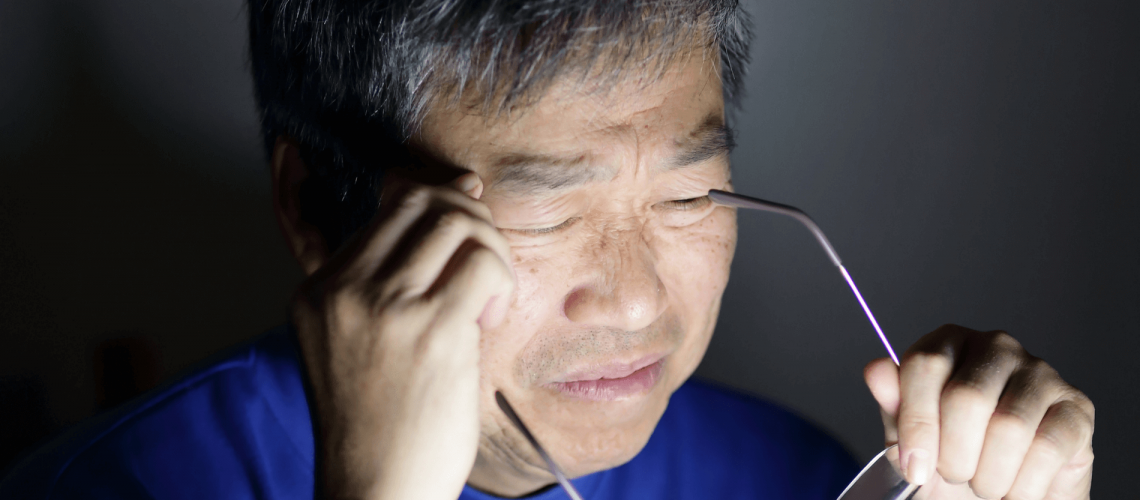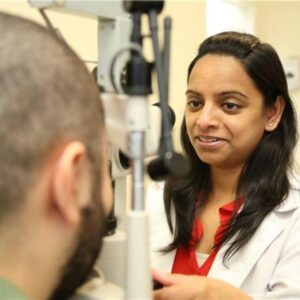What is digital eye strain?
We all know the feeling of trying to read something on an electronic device and having your eyesight suffer as a result. Eye strain can be symptoms from using these types if gadgets too much, which leads us into digital eye pain or dryness in some cases! It may seem minor but this discomfort will lead over time to more serious issues like migraines.
What’s worse is that problems like digital eye strain have increased in frequency substantially over the last several decades. Many individuals have symptoms if they use a computer or device for long periods. Most digital device users have symptoms at least some of the time, and digital eye strain is common in both children and adults.
What causes digital eye strain?
For a variety of reasons, reading text on a digital screen is often harder on the eyes than reading standard book text. This is why working on a computer for several hours may cause symptoms of digital eye strain, but reading a paper book may not.
Several factors contribute to digital eye strain, including:
- Poor lighting
- poor posture at a computer
- screen glare
- viewing a computer at an improper distance or angle
- Uncorrected eyesight issues
What is at risk for digital eye strain?
You may be at increased risk for digital eye strain if you:
- Sit too close to your electronic device
- Spend several hours per day on a digital device
- View your device at the wrong angle
- Have bad posture while operating your device
- Have eye problems not corrected with glasses or contacts
- Have a pair of glasses not suitable for viewing distance
- Do not take breaks while on your device
Dry eye is more common in females than men. It also becomes more common as you age. Some health issues can make dry eye more likely to occur. For example, for those that use antihistamines, you might be at an increased risk of having dry eye. Thyroid and particular autoimmune illnesses also contribute to this risk.
What are the symptoms?
Digital eye strain symptoms can include:
- Blurry vision
- Dry eye
- Double vision
- Eye fatigue
- Eye discomfort
- Itching of the eye
- Redness in the eyes
- Headaches
- Neck & Shoulder pain
How is it diagnosed?
Your eye care provider can make a diagnoses based on your health history and completing an eye exam. They will be able to assess whether any health problems, medicines, or environmental factors could be adding to these symptoms.
Your health care provider may text the sharpness of your vision and how much your eyes can focus and work jointly. For a more in-depth exam your doctor may wish to dilate (enlarge) your pupils. They would then use a device called an ophthalmoscope to look at the back of your eye. In rare cases you may need to get follow-up blood tests to understand more of the cause.
How is it treated?
Treatment includes the following:
- Resting your eyes for 15 minutes after each 2-hour block of use on adigital device
- Every twenty minutes, look off into the distance (at least 20 ft away) for at least 20 seconds
- Enlarge the text on your digital device
- Reduce glare from light sources in your room
- Consider utilizing a screen glare filter
- Place your screen so that the center is righly 4-5 inches below eye level (15-20 degrees from the horizontal)
- Blink often!
- Adjust your chair height so that your feet can rest comfortably on the ground. Do not slump over your desk.
Implementing these changes may help eliminate digital eye strain in many people.
What can I do to prevent it?
Create a work environment optimized for eye health and the prevention of digital eye strain using the tips above. See your health care provider regularly as this can help prevent and treat health problems that cause digital eye strain in the first place.




